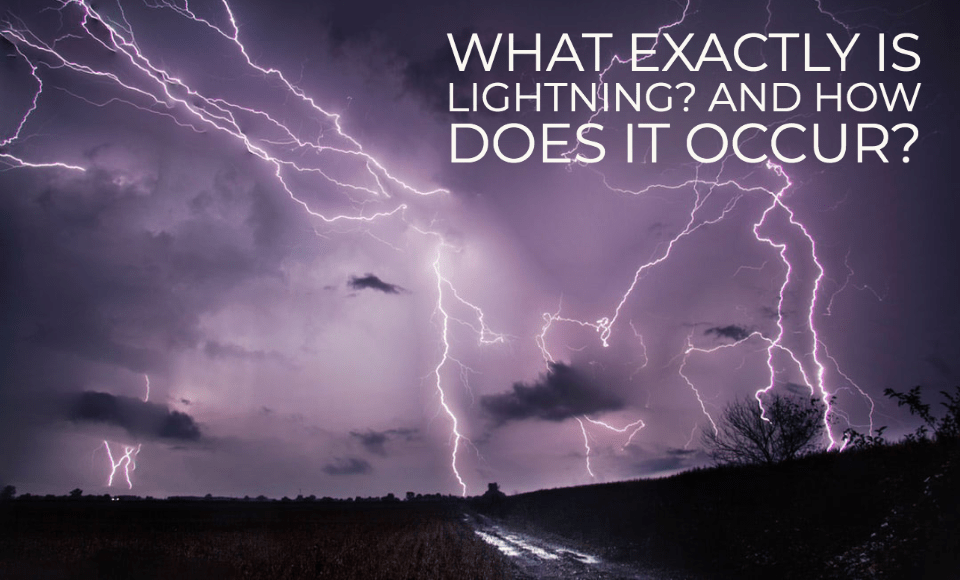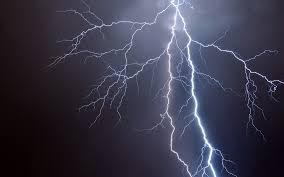Have you ever noticed sparks whenever you take off the jumper? Or else, experienced a static electricity shock? Lightning works pretty much the same way those given scenarios, but more on a massive scale.
Lightning is an electric current created by thunderstorms. These weather disturbances, while short-lived, produce very dangerous lightning. Truth to be told, around 75 to 100 people are injured or killed by lightning each year, even more significant than tornadoes and hurricanes. The chances of becoming a lightning victim in the United States is one over 700,00 each year. Odds of being hit in a lifetime is 1 in 3,000.
Lightning gets visible to us as a flash of blue to white light. It produces extremely high temperatures, causing the air molecules to enter an incandescence state and emit a bright light. Moreover, nitrogen gas, which is the most abundant in the atmosphere, is triggered to luminescence, releasing vivid blue-white light. Combining those two factors of incandescence and luminescence is what provides lightning its distinct and bright color.
A narrow lightning channel can reach extreme temperatures of up to 25,000° Celsius. Such heat causes air molecules to heat and expands violently and rapidly, even quicker than the sound’s speed. Thus, a sonic boom occurs, creating a sound wave that goes after a bolt of lightning or what we know as thunder.
Now, how does lightning occur? First, a cloud must be present. When the ground gets hot, it causes the heat above it to heat up and rise. As the warm air rises, the water vapor cools, condenses, and forms a cloud. When the surface continues, the process repeats, allowing the formation of bigger and bigger clouds. On the top of clouds, however, the temperature is below freezing point, turning the water vapor into ice.
Once this happens, the cloud turns into a thundercloud. Ice particles move around within the cloud, colliding with each other. Such bumping movement results in the accumulation of electrical charges.
As the charges continue to build up, the cloud will soon be brimmed with them. Those negative charge particles that tend to be heftier will lie on the lower part of the cloud. Meanwhile, positively charged particles, which are relatively lighter, settle on top of the cloud.
When both charges become large enough, it produces a massive spark, the lightning. It works the same way as static electricity, but in this case, on a more massive scale.
Though most lightning occurs within the cloud, there are instances when the cloud and the ground can trigger it. This time the negative charges on the bottom of the cloud connect with the positive charges on the ground. When it does, it creates lightning. Positive charges on the ground tend to build up on conductors such conductors and trees, which is why we often see the latter get struck by lightning.
If your hair starts to stand up in a storm, it is an indication that positive charges are rising upon you, connecting to the thunderstorm’s negatively charged particles. It is a bad sign, and lightning can strike anytime. The best action to do is to get indoors or find shelter immediately.
Lightning can also be seen in forest fires, nuclear detonations, snowstorms, massive hurricanes, and volcanic eruptions. There are around 100 lightning bolts that happen across the globe each second. That’s approximately 8 million daily or 3 billion annually. Nearly 4000 million electric kilowatts are produced by each average lightning.
More Readings
Lightning (Wikipedia)
Related Posts
-
- What is a hurricane? How is it different from a typhoon?
- What happens if an aircraft flying in stormy weather is struck by lighting?
- How does the meteorological department study the higher atmosphere for making weather forecasts?
- What keeps fire hydrants from freezing in winter?
- Is it true that during warm weather it is a bad idea to fill the car’s petrol tank at the end of the day?

